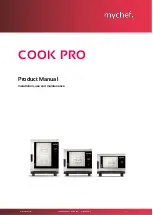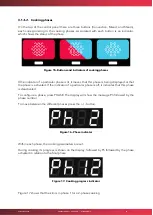
mychefcooking.com
PRODUCT MANUAL COOK PRO - DT.MP.CP.2201.2
11
5.
INSTALLATION
5.1.
Electrical connection
Check that the voltage at the point where the oven is to be connected coincides with the
operating voltage of the equipment.
The following table indicates the electrical characteristics of each of the devices:
Voltage
Power
(kW)
Current
(A)
Cable cross-section
(mm
2
)
4 GN 1/1
400/3L+N/50-60
6.3
10
1.5
230/3L/50-60
6.3
17
2.5
230/L+N/50-60
6.3
27
4.0
6 GN 1/1
400/3L+N/50-60
9.3
14
1.5
230/3L/50-60
9.3
25
2.5
10 GN 1/1
400/3L+N/50-60
18.6
29
4.0
230/3L/50-60
18.6
50
10.0
Table 2. Electrical wiring characteristics
Before carrying out any electrical work, make sure that there is no electrical current at the
connection point of the equipment.
The equipment must be connected to the mains via an all-pole switch with a contact
opening distance of more than 3mm. Also install a class A residual current device and
overcurrent protection.
Always ensure effective grounding.
Connect the device to an equipotential bonding
system using the contact specially
provided for this purpose (see equipotential bonding sign on the bottom left-hand side of
the device). If two devices are stacked, both devices must be connected to the equipotential
bonding system.
Connection to an equipotential bonding system ensures additional safety in
the event of simultaneous earth leakage and differential failure.
The wiring and other safety devices used for the electrical installation must have the
appropriate cross-section for the equipment in question.
Always comply with the applicable regulations for connecting the
equipment to the low-voltage mains.












































